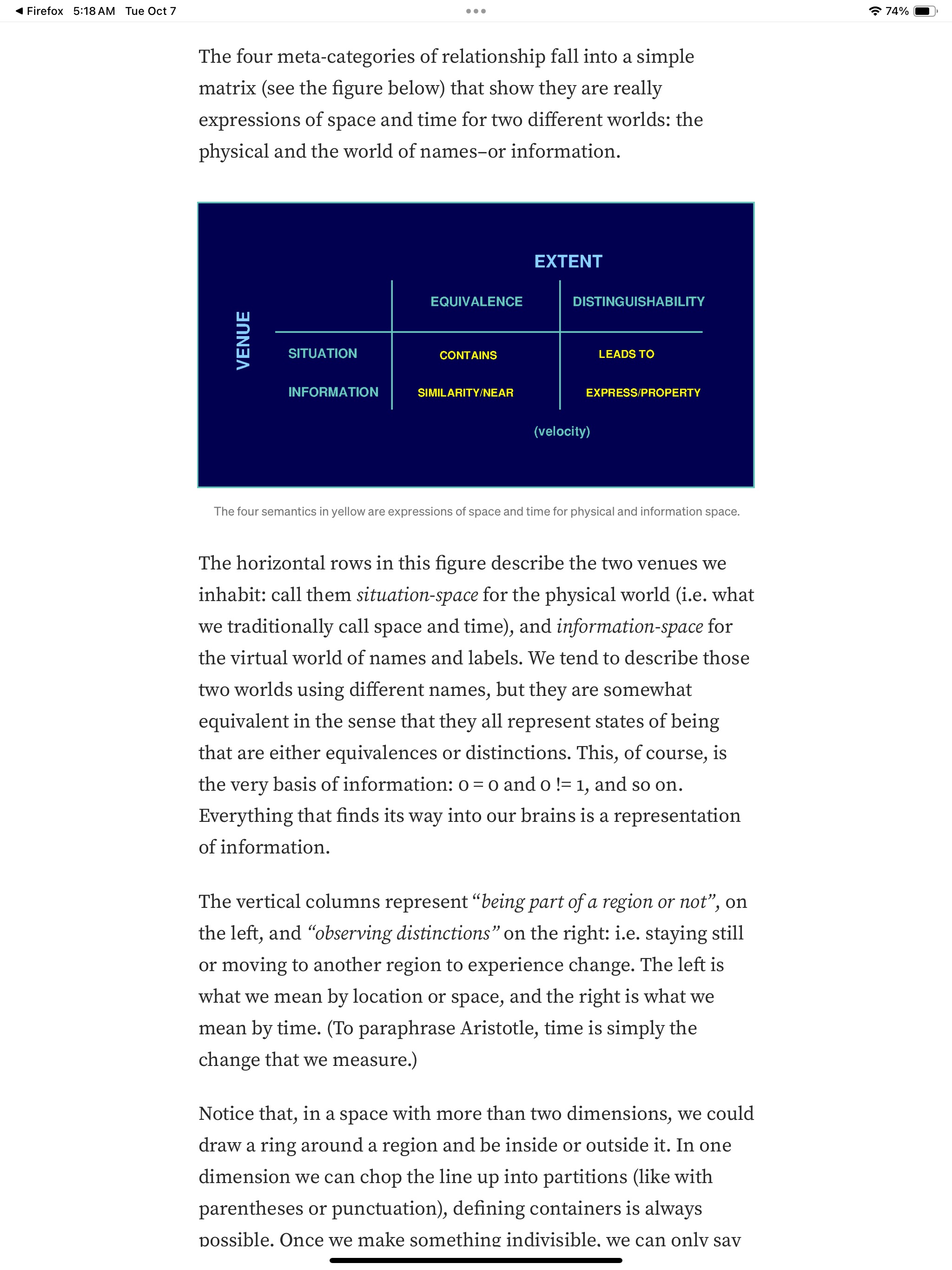General semantics deals with how we use symbols, and how symbols use us. It stresses the dangers of letting the symbol be confused with the thing it symbolizes. (Anon.)
...General semantics involves talking about ourselves and about the world so that the talk will fit the world. (Irving J. Lee)
...General semantics can be viewed as a program of guided awareness, of educated consciousness of what is going on in the world and within ourselves. (J. Samuel Bois)
...General semantics is concerned with constructing a science of man, based upon an empirical investigation of the way man's perception of reality is distorted by the screen of language interposed between him and his world. (Anatol Rapoport)
...General semantics points out how we "create reality" by selecting things to notice from Out There, selecting things to relate them to from In Here, and creating a Picture in Our Head from all that . One major problem is that we tend to think the picture we have created is a representation of what's happening Out There, when so much of that picture comes from stuff already In Here. (Robert Wanderer)
...General semantics is (1) the study or correction of human responses to symbols, symbol systems, sign systems and sign situations, (2) a study of how a human nervous system works and ought to work, (3) an educational theory whose aim is to study the evaluational processes of human beings, and (4) ultimately a nonverbal discipline of silence, of dissolving away the encrusted verbalizations and abstractions, dogmas and creeds which envelop most of us like layers of barnacles. (S. I. Hayakawa)
...General semantics urges upon us the image of language as a self-correcting cybernetic system, with verbal-visual maps that are tentative and hypothetical and always open to revision and amalgamation. These can never represent more than a part of the territory and are best seen as informed relationships between mind and environment. (Charles Hampden-Turner)
...General semantics is an analysis of language, beginning with meanings rather than sounds. It can give the student an increased ability to listen, to form valid judgments, to make practical decisions, and to escape the domination of verbal spooks. (Stuart Chase)
...General semantics involves the study of the relationships between words and other words and symbols and other symbols, and the relationships between words and what they stand for, but it emphasizes relationships between language and human behavior. It makes use of [one's] ability to transcend [oneself] and perceive [oneself] in the act of perception. (Kenneth Johnson)
...General semantics is concerned with communication and the reactions people have to the world of words and other symbols. It deals with the way in which our understanding of the world is influenced and shaped by how we talk about it. It is not simply a matter of studying language, but of studying yourself and your reactions. (S. I. Hayakawa)
...General semantics is about awareness and the personal linguistic unconscious that each of us has embedded within our systems, and taking a look at those unconscious assumptions and unconscious habits to see how they get us into trouble. (Eugene Rebstock)
...the idea that it's the structure of knowledge that matters more than its labels. By structure, we mean the scenario we are trying to describe, the roles and the behaviours, not whether we know the name of everything in the scene. If you're investigating a murder, you want to describe the crime scene as carefully as possible—but the position of the body and the weapon don't depend on what you call them? You could translate your knowledge into a foreign language and the story would still be the same, at least in some sense. If the words for gun and knife were the same in the foreign language, there might be some loss of information, but this is not usually the concern. In practice, this carefree abandon for words only works when what we are trying to express scenarios with a very clear “simple” structure—basic "atoms" of knowledge like statements about the behaviours of things, or rules that follow a clear pattern. These are the scenarios I'm addressing in the Semantic Spacetime project—by contrast with the text produced by today's Large Language Models, for instance.

...Word choices, on their own, are like the coordinates we use to map out meaning. They may be familiar shapes or any pattern or thing else recognizable to us —even a door handle. They are the recognisable "invariants"—anchors that we can rely on to pull up knowledge from the depths. Language is basically the accumulation of all these names, as patterns (with grammar) that can be associated with meanings. Meanings, then, are events, scenarios, things that happened, remembered as episodes that made us feel one way or the other. We can describe them up close (with microscopic properties), or from far away (where are they heading, and what are they part of). The association of meaning (which is closely related to intent) with these patterns is called semantics. That's just its name—what matters is, of course, the process it represents, i.e. what we do with it.
